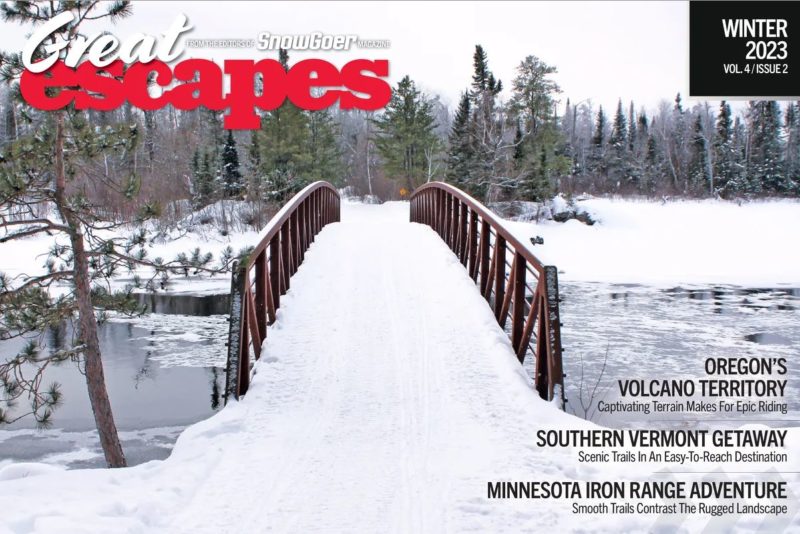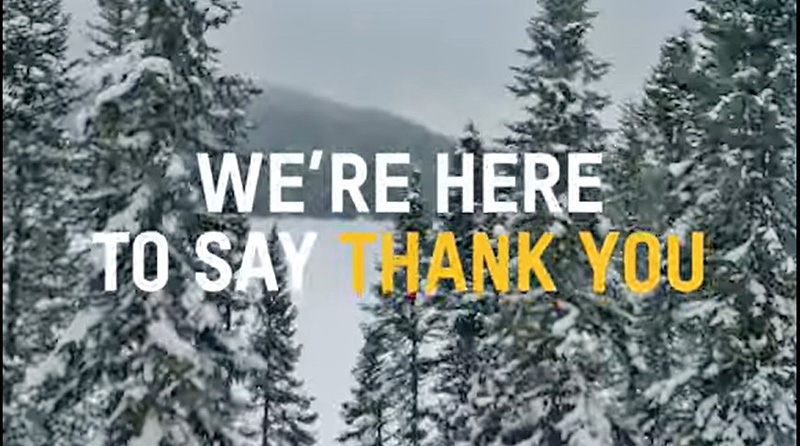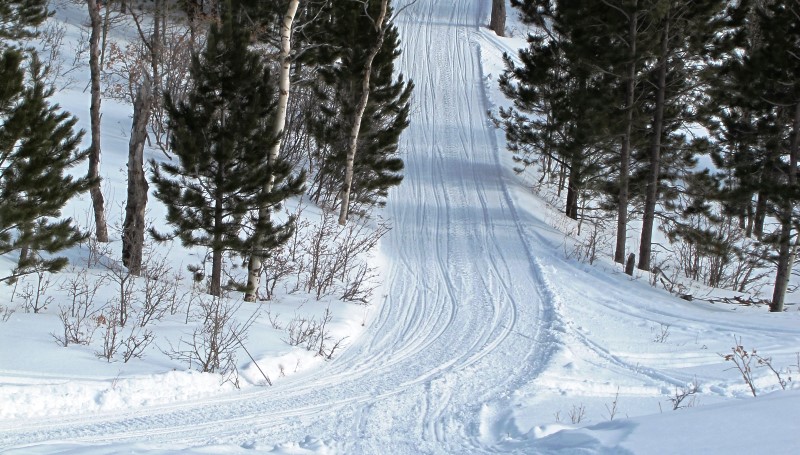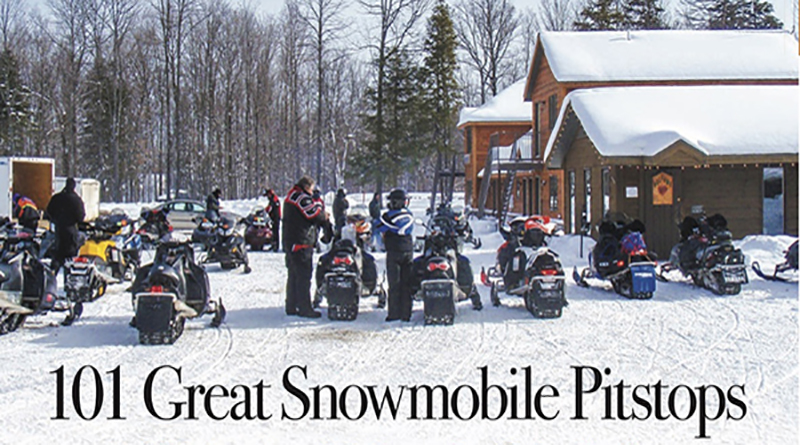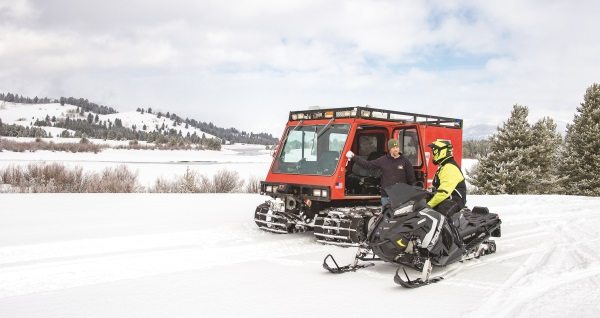
When Hurricane Irene hammered the Eastern Seaboard at the end of August, 2011, much of Vermont was devastated by unprecedented flooding. Highways and bridges washed out across the Green Mountain state, nearly a dozen towns were isolated, countless trees were down and lives were lost. The road repair bill alone approached $200 million, but much of that was covered by federal disaster relief funding.
What was not shown on the national television news was the corresponding destruction of the 4,755-mile statewide snowmobile trail network. The 129 clubs that make up the Vermont Association of Snow Travelers (VAST) were faced with the equally unprecedented task of essentially raising their trail system from the dead.
In just 15 weeks VAST had 95-percent of its corridor trails back in service. This resurrection is a testament to the desire, fortitude and abilities of a relative handful of committed volunteers who were initially armed only with what they could scrounge up from local sources.
As Tim Mills, trails coordinator for Bethel’s White River Valley Ramblers, points out, “With all the state highways being washed out, there was no equipment available for trail reconstruction. Every bulldozer and excavator was busy rebuilding our state highway infrastructure. The only thing we could do was wait for equipment to become available.”
Getting Started
Damage assessment wasn’t quick because the state was so torn up.
“It took three weeks after Irene struck,” recalled VAST Trails Coordinator Alexis Nelson of the time required to size up the problem statewide. More than 50 clubs had suffered significant trail damage, and a third of them were already addressing problems created by spring flooding. Money was obviously going to be a major issue.
“We took $250,000 out of our groomer contingency fund plus another $250,000 out of the Lamoille Valley Rail Trail funding,” Nelson explained. “We also received $10,000 from ISMA [International Snowmobile Manufacturers Association] and $2,000 from [PistenBully groomer distributor] Kassbohrer.” Nelson also points out that “the greatest amount of [financial] support has been from small businesses.”
But more than money, this project needed old fashion manpower. Most clubs didn’t wait to get started. They attacked the problems immediately. Mills explains how the White River Valley Ramblers in central Vermont went about assessing the damage and work that would be required.
“The first task was dividing up the 44 miles of trail into manageable sections,” Mills said. “I then assigned a club member to physically inspect by any means possible, first with ATVs and then continue on foot if necessary. This allowed us to compile a list of bridges, culverts, water bars and trail beds that would need repair and to prioritize each project by severity.
“The trail system had lost large sections of trail bed, some as long as three-quarters of a mile long,” Mills said. “A field inspection of every bridge and severe wash out was then made as a group to decide what repairs were needed and how much we could do on our own.”
But not every club was able get started so quickly. The Pittsfield area was one of the hardest hit in the entire state. “A week after the flood we still couldn’t get out of our town,” recollected Greg Martin of the Tweed Valley Travelers club, who reported that roads were cut in all directions. “I didn’t think we were going to have snowmobiling this year.”
And the Woodford Sno-Busters had a different problem in southern Vermont.
“The biggest challenge we faced was the total closure of the Green Mountain National Forest,” recalled trail master Scott Daniels. Almost all of the club’s entire trail system is in the national forest that straddles the spine of central and southern Vermont. “It had to be three to four weeks before we could go out [and get to work]. We had to rely on what the Forest Service did for assessment.”

Getting Down To Work
“One of my trail masters and I went out the weekend after Irene and we started rebuilding the weekend after that,” reported Stuart Merusi, president of the White River Valley Snow Goers in Braintree, near Randolph
in central Vermont. “It wiped out all our bridges except two. All in all it was 600 linear feet of bridging. Some of the material was salvageable. [We also] replaced a couple of six-foot culverts and a bunch of smaller ones. Luckily I knew a guy who had an excavator and we used that. It took $25,000 to rebuild our trail system, but if you charged off the [volunteer] time, it was probably more like $40,000.”
Roy Arthur of the Shrewsbury Sno-Birds has a similar story.
“We started the weekend after the storm, and we were done by November 5 or 6. We worked some weekdays but it was mostly weekends because it’s mostly volunteer labor,” Arthur said. The club had to recover, reset and repair seven bridges that had each washed 20 to 30 feet downstream, and totally reconstruct their sections of two key corridor trails. The bridge work alone took 240 hours of heavy equipment time plus additional hand labor, with another 150 to 200 hours of work devoted to the trail reconstruction effort. Club member Dave Fucci had his bulldozer, excavator and track dump truck on the trails for a month and a half to get the repairs done.
VAST reimbursed the club for equipment use, as was done statewide, but the Sno-Birds didn’t look for additional funding. “We were too busy working,” Arthur declared. “We were very fortunate to get the OKs to do the sections when we needed to.”
Greg Martin related that the Tweed Valley Travelers in the devastated Pittsfield area had “Five major bridges that were completely gone. We found the 18,000 pounds of steel from one of them 100 yards downstream. The deck was a mile and a half downstream and in one piece, but it was deformed. We were able to get in and cut it to pieces and salvage most of it.”

Other bridges required new abutments. “Almost all our 57 miles of trail were impacted in one way or another,” Martin said.
Even some of the trail surface damage was extreme. The Woodford Sno-Busters had eight miles of national forest trail that had to be completely excavated due to erosion. And another mile and a quarter of trail was wiped out.
Stories like these were repeated time and time again as clubs scrambled to get their trails functioning for the coming season.
Help Was Hard To Get
One other fact became crystal clear. Helping hands were hard to find. “It’s the same handful of people” doing the trail work, Merusi said. “I know a few people who lost houses and snowmobiles, but when they got situated, they were out working on the trails.”
“Basically the same dozen people,” Daniels says about the crews actually doing the work on the Woodford club trails. His club has mostly out-of-area members, making it hard to get extra help. Daniels remarked that while many people find time to come up to ride during the winter, very few show up for trail work. “We did pick up a couple of people who came up for one day to do some brushing and shoveling out some water bars by hand in areas where we couldn’t get equipment in,” he said, and also reported that “The (National) Forest Service came up with $25,000 for the trails.”
“We’ve had about a dozen people really step up to the plate,” Martin reported. “Several different people have donated use of equipment. Some contractors allowed us to rent equipment at half price.”

Resurrection Nearly Complete
The recovery from Hurricane Irene was absolutely remarkable.
“Only about two miles of our trails won’t be open this year,” Martin said, an incredible turn-around for the Pittsfield area that took massive flood damage. From Braintree, Merusi reported that “We’re rebuilt to 100 percent.” And Mills echoes him by saying his trail system is completely repaired.
There were a couple dozen areas statewide that didn’t make it. About 7.5 miles of the Woodford club’s system on forest roads in the Green Mountain National Forest were too badly damaged to be repaired in time for the riding season. But these pieces, including a major bridge, have been given priority status for repair in the summer and fall of 2012. They should be up and running again for next season and almost certainly in better condition than prior to the flooding.
“The fact that all of the trail repair and restoration work was accomplished by volunteers is astounding,” said VAST’s Nelson. “The level of dedication and commitment to providing an interconnected statewide trails system following the devastation from Irene has raised the bar for any volunteer organization. Of the 50-plus VAST clubs affected by Irene’s aftermath, not one club gave up or waited for someone else to assess and address the damage. It is difficult to fathom the extent of the devastation. The damage was widespread and beyond anything we had ever seen in our lifetime.”
Don’t Take It For Granted
Snow Goer salutes the dedicated club volunteers who accomplished the near impossible to resurrect Vermont’s snowmobile trail system with lots of hard work and not much assistance, financial or otherwise, from public agencies.
Yet, while their recovery efforts are certainly more extreme than most clubs have to deal with, it’s important to note that, every year, clubs across the U.S. and Canadian Snowbelt are challenged with varying tasks to keep the trails open. Whether it’s relatively simple brushing projects to bridge building, clearing downed trees to recovering from the other effects of tornadoes, straightline winds or flooding, not to mention securing land access, the impressive trail system that is the lifeblood of the sport is still largely dependent on volunteers and clubs members. And it’s people like those in Vermont — and across North America — who make snowmobiling great!

